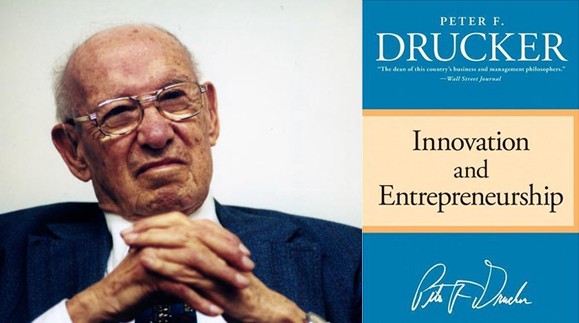"A business that wants to be able to innovate, wants to have a chance to succeed and prosper in a time of rapid change, must build entrepreneurial management into its own system!" --- Peter F. Drucker, Innovation and Entrepreneurship (1985)
Introduction
The book on Innovation and Entrepreneurship by Peter F. Drucker was written in 1985 and is still very relevant in 2023. At the heart of his argument lies two very simple beliefs:
- Management is the new technology (rather than any specific new science or invention) that is making the American economy into an entrepreneurial economy.
- Innovation and Entrepreneurship are capable of being presented as a discipline, capable of being learned, and capable of being practiced.
Drucker posits that innovation and entrepreneurship are “risky” mainly because so few of the so-called entrepreneurs know what they are doing. In order to reduce the risk of innovation and entrepreneurship and increase your likelihood of success, you need to establish purposeful innovation across the following 7 sources of innovative opportunity:
Therefore, innovation should be systematic and consist of a purposeful and organized search for changes. It should also consist of a systematic analysis of the opportunities such changes might offer for economic or social innovation.
The System: Establish Entrepreneurial Management
Peter F. Drucker is the father of modern business management and in this book, he puts forth a pathway for entrepreneurs to follow. Successful entrepreneurship and innovation are based on luck or genius. It’s based on the systematic and purposeful search for opportunities within the seven sources discussed in this book.
The System of Success is establishing Entrepreneurial Management!
Entrepreneurial management of most new ventures has 4 main requirements:
If you can establish this framework in your organization or new venture, you will get purposeful innovation at low risk. Drucker makes sure to state unequivocally that innovation and entrepreneurship should not take unnecessary risks. Successful innovators and entrepreneurs are not “risk-takers.” They try to define the risks they have to take and minimize them as much as possible, and entrepreneurial management helps them do that.
What I Will Do Differently?
Downloadable Content
The book on Innovation and Entrepreneurship was written by Peter F. Drucker in 1985. The year is 2023 and his principles are still relevant. As stated above, a business that wants to be able to innovate, wants to have a chance to succeed and prosper in a time of rapid change, must build entrepreneurial management into its own system. The following raw notes were created by me to help streamline a deeper understanding of Peter F. Drucker’s concepts in Innovation and Entrepreneurship. Hope you enjoy it!

